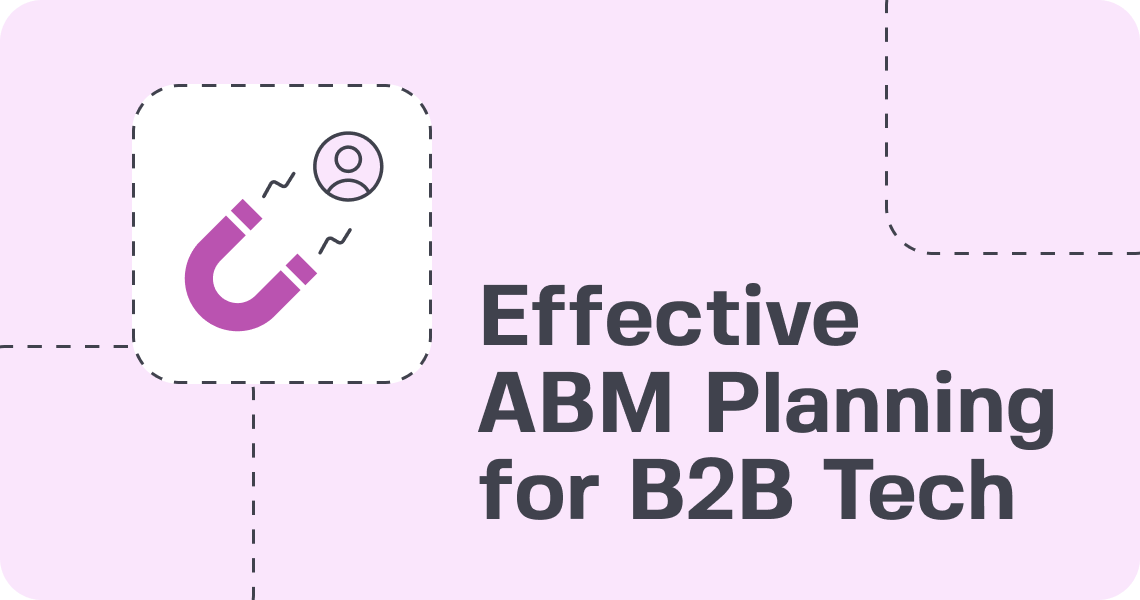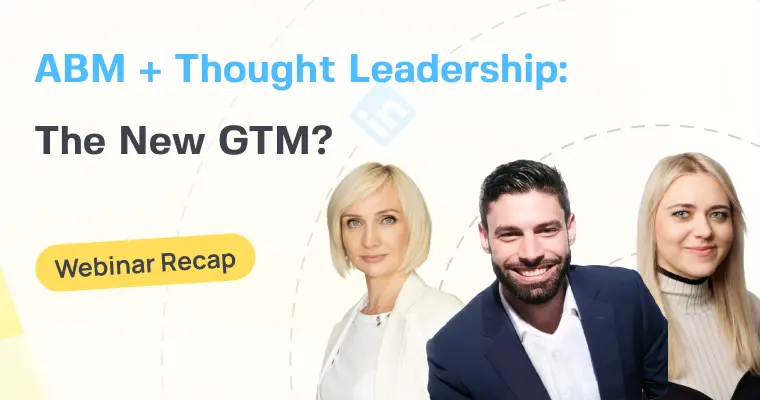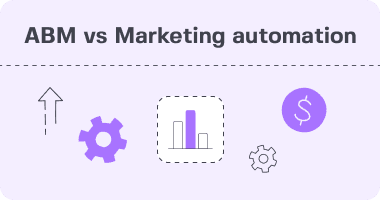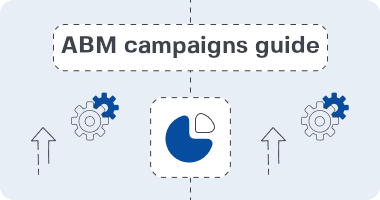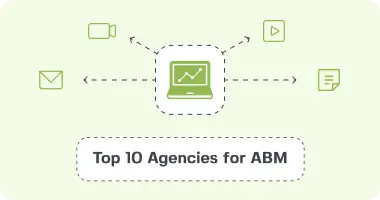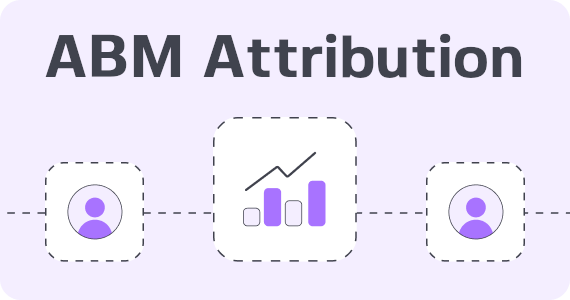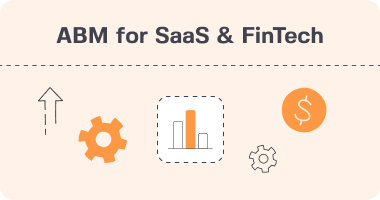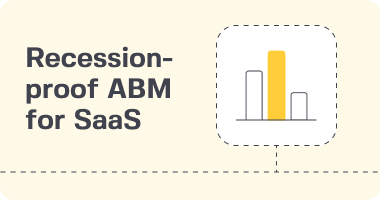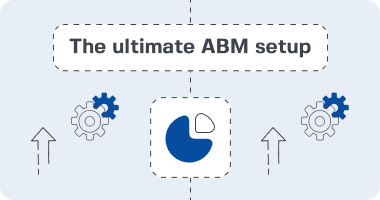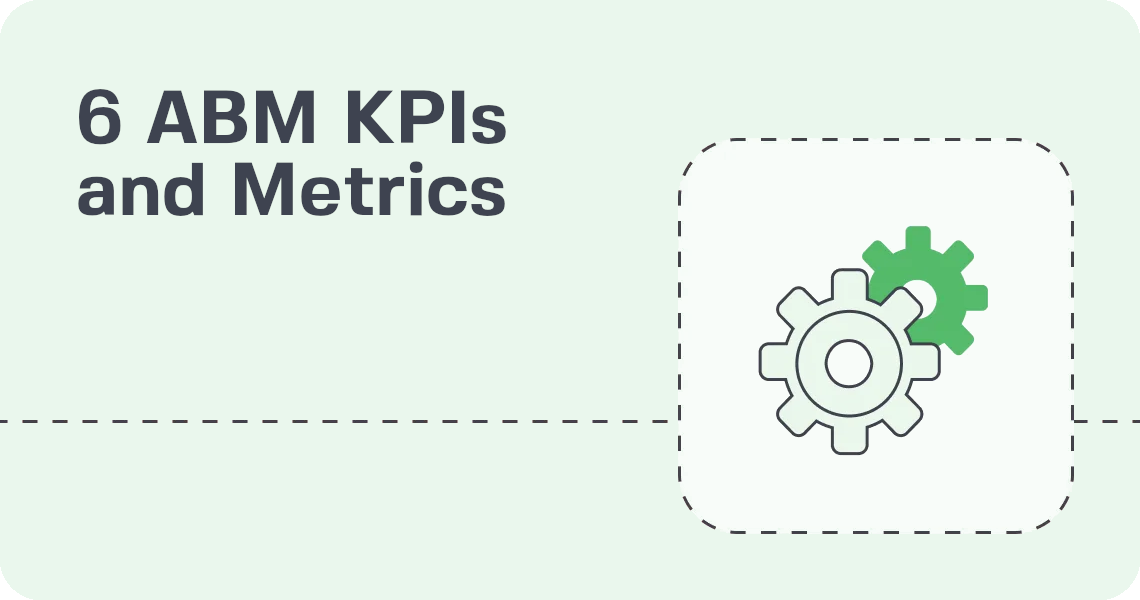Account-Based Marketing (ABM) has changed how SaaS companies approach enterprise sales. Instead of casting a wide net and hoping for leads, you focus your entire go-to-market engine on the accounts that matter most. At 42DM, we’ve seen this precision approach deliver 3-5x better ROI than traditional demand generation tactics for our enterprise SaaS clients.
This guide explores proven account-based marketing examples, strategic frameworks, and real-world insights that drive sustainable revenue growth for B2B SaaS organizations. You’ll find actionable strategies to transform your approach to customer acquisition and expansion.
What is Account-Based Marketing and Why Does It Matter for SaaS Companies?
Account-Based Marketing (ABM) is a strategic B2B approach where marketing and sales teams work together to identify, engage, and convert specific high-value companies rather than individual leads. For SaaS businesses, this means you concentrate resources on accounts with the highest potential for recurring revenue, expansion opportunities, and complex buying processes.
Understanding ABM in the SaaS Context
Traditional marketing focuses on volume. You generate as many leads as possible and pass them to sales for qualification. Account based marketing flips this model entirely. Instead of attracting individual prospects, you pursue entire organizations as markets of one.
At 42DM, we’ve found that ABM marketing represents a fundamental shift in how companies allocate their marketing budget. Rather than spending resources on broad campaigns that reach thousands of potentially irrelevant prospects, you invest in deeply personalized experiences for the 50, 100, or 200 accounts that represent the majority of your revenue potential.
For SaaS companies specifically, ABM marketing addresses several unique challenges:
Complex, Multi-Stakeholder Buying Cycles: Enterprise SaaS purchases typically involve 6-10 decision-makers. These include technical buyers, economic buyers, and end users. ABM lets you engage all these stakeholders at once with tailored messaging that addresses their specific concerns.
Longer Sales Cycles: When deals take 6-18 months to close, you need sustained engagement to stay top-of-mind. Account based marketing provides the framework to maintain momentum across extended timelines.
Recurring Revenue Models: SaaS success depends on retention and expansion. ABM marketing doesn’t stop at the close. It continues throughout the customer lifecycle and identifies upsell and cross-sell opportunities.
Why ABM Works So Well for SaaS Organizations
The statistics speak for themselves. According to ITSMA research, 87% of B2B marketers claim that account based marketing strategies deliver higher ROI than any other marketing approach. We see even more dramatic results with SaaS companies because ABM aligns so well with subscription business models.
Here’s why ABM marketing works for SaaS:
Precision Targeting Increases Win Rates: One of our clients, a cybersecurity SaaS platform, shifted from generic lead generation to ABM. Their enterprise win rate jumped from 12% to 31% within two quarters. They focused only on accounts that matched their ideal customer profile—mid-market financial services firms with 500+ employees and legacy security infrastructure. This eliminated wasted effort on poor-fit prospects.
Sales and Marketing Alignment Drives Efficiency: The traditional tension between sales and marketing disappears when both teams rally around the same target accounts. At 42DM, we’ve implemented account based marketing programs where marketing and sales share the same dashboards, attend joint planning sessions, and own combined revenue targets. This alignment typically reduces friction by 60-70% and significantly accelerates pipeline velocity.
Personalization at Scale Delivers Measurable Impact: Modern marketing automation and intent data platforms enable what we call “scalable personalization.” You can deliver individualized experiences to hundreds of accounts without manually customizing every touchpoint. One healthcare SaaS client achieved 56% email open rates—nearly 4x their previous average. They used account-specific messaging that referenced recent regulatory changes affecting each target hospital system.
Resource Efficiency Improves CAC and LTV Ratios: When you stop chasing unqualified leads, you dramatically reduce customer acquisition costs. A MarTech SaaS company we worked with reduced their CAC by 42% while simultaneously increasing average contract value by 28% in the first year of their ABM program. This improved their CAC-to-LTV ratio from 1:3.2 to 1:5.8.
How ABM Aligns with Executive-Level Strategic Priorities
For C-level leaders, an account based marketing strategy isn’t just another marketing tactic. It’s a strategic growth lever that directly impacts your most important business metrics.
Predictable Pipeline Creation: CFOs and CEOs need predictability in revenue forecasting. Traditional marketing’s unpredictable lead flow makes planning difficult. ABM creates highly predictable pipeline because you target a defined list of accounts with known characteristics. At 42DM, we help clients build 12-18 month account engagement roadmaps that forecast pipeline creation with remarkable accuracy.
Accelerated Account Expansion: For SaaS businesses, net revenue retention (NRR) often matters more than new customer acquisition. ABM strategy frameworks extend naturally into customer marketing and identify expansion opportunities within your install base. One analytics SaaS client used ABM to increase NRR from 108% to 127%. They systematically engaged stakeholders in other business units who weren’t yet using their platform.
Improved Revenue Efficiency: Every dollar you spend on marketing should generate a measurable return. A focused account based marketing strategy means marketing budgets directly correlate to revenue outcomes. When one of our clients presented their ABM results to their board, they demonstrated $6.40 in influenced pipeline for every $1 invested in their ABM marketing program.
What Are the Key Elements of Successful Account-Based Marketing in SaaS?
Successful ABM in SaaS requires four foundational elements: precise target account selection, personalized multi-channel outreach, coordinated sales-marketing execution, and rigorous performance measurement. Without all four components working together, ABM programs struggle to deliver results.
How Do You Select the Right Target Accounts for ABM?
Target account selection determines everything that follows in your ABM program. Get this wrong, and even brilliant execution won’t save you.
At 42DM, the most effective approach combines quantitative data analysis with qualitative sales intelligence:
Start with Your Ideal Customer Profile (ICP): Analyze your best existing customers. Look at those with high lifetime value, fast time-to-value, low churn risk, and strong expansion rates. What characteristics do they share? Build a scoring model based on firmographic attributes like industry, revenue size, employee count, and growth trajectory.
Layer in Technographic and Intent Data: Modern data providers like 6sense and Bombora reveal what technologies prospects currently use and what solutions they actively research. One infrastructure SaaS client identified 73 accounts showing high intent signals for “legacy system modernization”—their core value proposition. They focused their entire Q4 ABM program on those companies.
Apply Engagement and Relationship Mapping: Which accounts already have warm connections to your organization? Do they engage with your content? Have they attended events? Have sales had preliminary conversations? Existing relationships dramatically improve ABM success rates.
Prioritize Based on Account Fit: Not all ICP-matching accounts deserve the same investment. At 42DM, we typically tier accounts into three categories:
- Tier 1 (1:1 ABM): 10-20 accounts receive completely customized, white-glove experiences
- Tier 2 (1:Few ABM): 50-100 accounts group by industry or use case and receive semi-customized content
- Tier 3 (1:Many ABM): 200-500 accounts receive programmatic personalization at scale
This tiering ensures you allocate resources to match revenue potential.
What Personalized Outreach Strategies Work Best for SaaS ABM?
Generic outreach kills ABM programs before they even begin. True personalization requires deep research and creative execution.
Industry-Specific Email Campaigns: One of the most effective account based marketing email examples we’ve deployed involved a compliance SaaS targeting healthcare CFOs. Instead of generic “improve compliance” messaging, each email referenced specific regulatory changes (like CMS interoperability rules). We estimated the financial impact on that specific health system based on public bed count data. Each email included a custom ROI calculator pre-populated with their information. Response rates exceeded 22%.
Executive-Level Direct Messaging: LinkedIn remains powerful when you do it thoughtfully. At 42DM, we coach clients to research target executives thoroughly—their career history, recent posts, shared connections, and stated priorities. Then craft messages that reference specific, relevant information. “I noticed your recent post about digital transformation challenges in manufacturing. We helped [similar company] solve a related problem around [specific use case]…” This approach typically achieves 40-50% response rates versus 5-7% for generic InMails.
Personalized Microsites: For tier 1 accounts, consider building dedicated web experiences. One enterprise SaaS client created 15 account-specific microsites. Each featured custom ROI calculations, case studies from similar companies, integration documentation for their specific tech stack, and personalized video messages from their executive team. Eight of those 15 accounts became customers within 18 months, representing $4.2M in new ARR.
How Should SaaS Companies Orchestrate Multi-Channel ABM Campaigns?
The power of an account based marketing strategy comes from coordinated engagement across multiple touchpoints. Prospects need 7-13 meaningful interactions before they’re ready to engage with sales.
We’ve found that effective account based marketing campaigns synchronize these channels:
Email Sequences: Create automated but highly personalized email nurture tracks that adapt based on engagement behavior. If a prospect downloads a security whitepaper, the next email addresses security concerns rather than continuing a generic sequence.
Paid Media Retargeting: LinkedIn and programmatic display platforms enable account-based advertising. When contacts from target accounts visit your website, they see customized ads referencing their company name and specific challenges. One fintech SaaS client saw 3.2x higher ad engagement using account-based creative versus generic advertising.
Direct Mail and Strategic Gifting: Physical touchpoints cut through digital noise. At 42DM, we’ve orchestrated campaigns where account executives sent personalized books to target executives with handwritten notes. The notes explained why that specific book related to challenges we knew they faced. This “give first” approach opened conversations that had previously gone unanswered.
Executive Events: Nothing builds trust like face-to-face interaction. Host intimate dinners or virtual roundtables where 8-12 target accounts discuss industry challenges with peers and thought leaders. These aren’t sales pitches—they’re genuine value exchanges that position your brand as a trusted advisor.
Sales Outreach: Throughout all marketing touches, SDRs and account executives maintain parallel outreach. They stay aware of every marketing interaction through shared systems. This coordination prevents duplicate touches and ensures consistent messaging.
What Metrics Should You Track to Measure ABM Success?
Traditional marketing metrics like MQLs and lead volume become meaningless in ABM marketing. You need account-level metrics that reflect the reality of enterprise sales cycles.
At 42DM, we’ve built ABM dashboards that track these critical metrics:
| Metric | Description | Why It Matters |
| Account Engagement Score | Aggregate activity across all touchpoints and contacts within each account | Indicates account-level interest and buying stage progression |
| Coverage and Penetration | Percentage of target stakeholders you’ve engaged within each account | Complex deals require engaging 6-10 people; this shows your progress |
| Pipeline Velocity | Time from first meaningful engagement to closed deal | ABM should accelerate deals by aligning stakeholders early |
| Win Rate by Account Tier | Conversion rate from target account to closed customer | Tier 1 accounts should show 30-50% win rates if targeting is correct |
| Average Contract Value | Deal size by account segment | ABM typically increases ACV by 20-40% through better qualification |
| Customer Lifetime Value | Total revenue over full customer lifespan | ABM’s relationship focus should improve retention and expansion |
| Marketing-Sourced Pipeline | Pipeline value attributed to ABM efforts | Demonstrates marketing’s direct revenue contribution |
| CAC Payback Period | Time to recover customer acquisition costs | Should decrease as ABM improves efficiency |
One critical insight from our work: resist the temptation to measure ABM programs monthly. Enterprise sales cycles span quarters or years. We recommend quarterly business reviews focused on trends and annual measurement of true ROI.
What Are Proven Account-Based Marketing Examples from Successful SaaS Companies?
Real-world account based marketing success stories demonstrate how personalized, coordinated campaigns drive measurable revenue growth across different SaaS segments. Let’s examine specific examples that illustrate best practices.
Example 1: How Did a Martech SaaS Company Use Personalized Email to Generate $800K in Pipeline?
One of our clients, a marketing technology platform, struggled to engage enterprise CIOs and CFOs. These executives received overwhelming amounts of generic vendor outreach. Their previous email campaigns generated 8-12% open rates and virtually no meetings.
We implemented a highly personalized email approach:
Research Phase: For each target account, we compiled intelligence. This included recent funding announcements, tech stack information from job postings and BuiltWith, strategic initiatives mentioned in earnings calls or press releases, and leadership changes.
Message Customization: Each email referenced 2-3 specific data points about the account. For example: “I noticed [Company] recently raised $50M in Series B funding. Companies at this growth stage often struggle with marketing attribution as their stack becomes more complex. We helped [similar company] consolidate seven tools and improve attribution accuracy by 43%…”
Value-First Approach: Instead of requesting meetings immediately, initial emails offered valuable resources. These included industry benchmark reports with data specific to their segment, ROI calculators pre-populated with their estimated numbers, or relevant case studies.
Results: The campaign achieved 56% open rates and 12% meeting booking rates—nearly 7x their previous performance. More importantly, it influenced $800K in pipeline across 23 target accounts within six months.
The lesson? Personalization isn’t about inserting a company name into a template. You must demonstrate you understand their specific situation and have relevant insights to share.
Example 2: How Did a Compliance SaaS Platform Close Enterprise Deals Through Exclusive Events?
A compliance and regulatory technology company wanted to break into healthcare and financial services enterprises. These markets are notoriously difficult with long sales cycles and risk-averse buyers.
At 42DM, we recommended an event-based ABM strategy:
Event Design: Rather than a broad webinar, we orchestrated an invitation-only virtual roundtable. We limited it to 30 C-level executives from target accounts. The topic: “Navigating the Evolving Regulatory Landscape in Healthcare Finance”—addressing the intersection of both target industries.
Strategic Programming: We secured speakers, including a senior analyst from Gartner, a compliance officer from a Fortune 100 health system, and a fintech CISO. This wasn’t a product pitch. It was a peer discussion of industry challenges. Our client’s CEO participated as a panelist, not a salesperson.
Personalized Invitations: Account executives personally called each target executive to extend the invitation. They referenced why this specific topic mattered for their organization. This wasn’t a mass email invitation. It was a high-touch, exclusive opportunity.
Follow-Up Orchestration: After the event, attendees received personalized follow-up. This included session recordings, a custom white paper addressing topics raised during discussion, and one-to-one consultation offers with industry specialists.
Results: 30% of invited executives attended (compared to typical webinar attendance of 20-25% of registrants). The event directly created $500K in qualified pipeline. Two attendees became customers within six months—deals worth $380K and $290K respectively.
This example demonstrates ABM’s power to build trust and credibility before any sales conversation begins.
Example 3: How Did Custom Content Reduce Sales Cycle Length by 25%?
An analytics SaaS company faced a persistent challenge. Even interested prospects took 12-15 months to close because multiple stakeholders needed to align on requirements, ROI, and implementation approach.
We helped them develop an account-specific content strategy:
Executive Microsites: For tier 1 accounts, we built private web portals. These featured custom executive dashboards showing potential ROI based on their specific business metrics, interactive tools allowing them to model different implementation scenarios, case studies from companies in their exact industry and size range, and pre-built integration documentation for their known tech stack.
Use-Case Documentation: Instead of generic product guides, we created detailed documents showing how the platform would solve their specific business challenges. For a retail client, we documented exactly how their platform would analyze foot traffic patterns across 340 stores to optimize labor scheduling. We used their actual store count and known challenge.
Industry Content Bundles: We packaged together whitepapers, compliance checklists, security documentation, and ROI frameworks specific to each target industry. Healthcare accounts received HIPAA compliance guides. Financial services accounts received SOC 2 and GDPR documentation.
Results: Sales cycle length decreased from an average of 13.2 months to 9.8 months—a 25% reduction. More importantly, deals progressed more smoothly with fewer stalls. Stakeholders had the information they needed to make decisions independently. Win rates improved from 18% to 26%.
The insight? Content in account based marketing shouldn’t be generic educational material. It should be decision-support tools that help buying committees move forward.
Example 4: How Did Sales-Marketing Alignment Increase Deal Size by 33%?
A global marketing operations SaaS provider came to 42DM with a classic problem: sales and marketing operated in silos. Marketing generated leads that sales considered unqualified. Sales pursued accounts that marketing hadn’t warmed up. Neither team had visibility into the other’s activities.
We implemented a comprehensive alignment program:
Shared ABM Framework: We facilitated workshops where both teams collaboratively selected target accounts, defined account selection criteria, agreed on engagement strategies for each tier, and established shared success metrics and compensation aligned to account progress.
Unified Technology and Dashboards: We integrated their CRM, marketing automation platform, and sales engagement tools. Now every interaction was visible to both teams. Dashboards showed account engagement scoring that combined marketing touches and sales activities.
Joint Planning Rituals: We set up weekly pipeline reviews where sales and marketing discussed specific accounts together. Monthly strategy sessions refined target account lists and adjusted tactics. Quarterly business reviews measured shared revenue outcomes.
Results: Within three quarters, average deal size increased 33%. Sales pursued better-qualified accounts and marketing could support deals throughout the sales cycle. Marketing-sourced pipeline grew 40% as sales provided earlier visibility into promising accounts that marketing could then accelerate.
This example proves that ABM technology and tactics matter less than organizational alignment. The best campaigns fail without coordination.
How Should Different SaaS Business Models Approach ABM Strategy?
You must adapt ABM strategies to match your business model, average contract value, and target customer segment. A one-size-fits-all approach fails because SMB, enterprise, and vertical SaaS companies face fundamentally different challenges.
How Can SMB SaaS Providers Implement ABM Effectively?
Many SMB SaaS leaders dismiss account based marketing as “only for enterprise,” but that’s a mistake. While lower average contract values (typically $5K-$50K annually) require more scalable approaches, SMB companies can absolutely benefit from account-based thinking.
At 42DM, we’ve helped SMB SaaS clients implement what we call “ABM Lite”:
Hyper-Targeted Industry Campaigns: Instead of targeting individual accounts, focus on micro-segments. One project management SaaS targeted “architecture firms with 20-75 employees in the Pacific Northwest.” This narrow focus allowed personalized messaging at scale.
Scalable Personalization Through Automation: Use merge fields creatively—not just {Company Name} but {Industry}, {Specific Use Case}, {Common Challenge}. One email automation platform client achieved 31% response rates using emails that felt personalized but were actually templates with smart segmentation.
Faster Feedback Loops: SMB deals close in 4-8 weeks typically. This allows rapid iteration. You can test messaging, offers, and channels quickly, then scale what works.
The key insight? SMB ABM is typically 1:many. You group accounts by shared characteristics and personalize at the segment level rather than the individual account level.
What ABM Strategies Work Best for Enterprise SaaS Companies?
Enterprise SaaS, with average contract values of $100K-$1M+ and 9-18 month sales cycles, represents ABM’s sweet spot.
Our recommended approach for enterprise clients:
Prioritize 1:1 and 1:Few Strategies: With deals worth hundreds of thousands or millions, you can justify significant investment per account. Allocate 60-70% of your ABM budget to tier 1 accounts receiving completely customized experiences.
Executive-Level Engagement: Enterprise deals require C-suite buy-in. One infrastructure SaaS client we worked with had their CEO record personalized video messages for the CEOs of their top 20 target accounts. This wasn’t scalable—but it didn’t need to be. Four of those 20 executives responded directly, and three became customers.
CFO-Level Business Cases: Enterprise buyers don’t buy features—they buy business outcomes. At 42DM, we build custom financial models for tier 1 accounts. These show three-year TCO comparisons, implementation costs, expected efficiency gains, and ROI timelines. These business cases become internal selling tools that champions use to convince their CFOs.
Integration with Revenue Operations: Enterprise account based marketing can’t be a side project. It must integrate into your RevOps processes, forecasting methodologies, and account planning frameworks.
How Should Vertical SaaS Solutions Adapt ABM for Niche Markets?
Vertical SaaS companies—built for specific industries like construction, healthcare, or legal services—face unique ABM opportunities and challenges.
The advantage? You speak to buyers who face identical challenges, use similar language, and value deep domain expertise.
Our approach for vertical SaaS clients is as follows:
Leverage Deep Industry Knowledge: One construction management SaaS client’s account based marketing emails referenced specific pain points like “prevailing wage compliance complexity” and “subcontractor lien waivers.” This terminology immediately signaled industry expertise. Generic software companies can’t compete with this level of specificity.
Education-First Approach: Vertical buyers often need education about what’s possible with software in their industry. Use ABM marketing to position your company as the industry expert. Host educational webinars, create industry-specific benchmarking reports, and facilitate peer discussion forums.
Relationship-Based Selling: Vertical industries often have tight-knit professional communities. One legal tech client discovered that 60% of their target accounts knew each other through state bar associations. We helped them activate customer advocates who could introduce them to prospects—far more effective than cold outreach.
Long-Term Trust Building: Vertical buyers are skeptical of software vendors who don’t understand their world. ABM allows patient relationship-building that demonstrates genuine industry commitment.
What Are the Best Practices for Implementing Account-Based Marketing in SaaS?
Successful ABM implementation requires organizational alignment, data-driven targeting, relationship focus, and continuous optimization. These best practices emerge from years of experience implementing account based marketing programs across dozens of SaaS companies.
How Do You Achieve True Sales and Marketing Alignment for ABM?
At 42DM, alignment failures are more detrimental to ABM programs than poor tactics or technology limitations.
Here’s our proven alignment framework:
Establish Shared OKRs and Compensation: Both teams should be measured and compensated based on the same account progression metrics. With one client, we changed marketing bonuses from “MQLs generated” to “target account engagement scores.” We adjusted sales bonuses to include “account warming activities.” Within one quarter, collaboration improved dramatically because incentives aligned.
Implement Clear Service Level Agreements: Document who does what and when. For example, marketing commits to achieving a minimum engagement score before sales outreach begins. Sales commits to following up within 24 hours when accounts show high intent. These SLAs create accountability.
Host Joint Planning Sessions: Set up weekly tactical reviews of specific accounts. Monthly strategic planning refines target lists and approaches. Quarterly business reviews measure combined results. One fintech SaaS client holds “account council” meetings every Monday morning. Sales and marketing spend 45 minutes reviewing the top 20 target accounts together.
Create Shared Dashboards and Systems: If sales and marketing look at different dashboards, alignment is impossible. Integrate CRM, marketing automation, sales engagement, and conversation intelligence platforms. Everyone should see the same truth about account engagement.
How Should SaaS Companies Use Data and Intent Signals to Improve ABM Targeting?
Account based marketing success depends on targeting the right accounts at the right time with the right message. This requires sophisticated data strategies.
At 42DM, we help clients build data-driven targeting by:
Firmographic and Technographic Enrichment: Services like Clearbit, ZoomInfo, and HG Insights reveal detailed information about target accounts. Know their tech stack before you reach out. This allows you to reference specific tools and integration possibilities.
Third-Party Intent Data: Platforms like Bombora and 6sense track content consumption across thousands of B2B websites. They reveal what topics target accounts research. One cybersecurity SaaS client identified accounts researching “zero trust architecture” and “SASE solutions.” These were clear buying signals for their product. They focused ABM efforts on those high-intent accounts and saw win rates double.
First-Party Engagement Signals: Track behavior on your own properties. Monitor website visits, content downloads, webinar attendance, G2 reviews, and pricing page visits. Use tools like Qualified or Drift to identify which target accounts actively engage.
AI-Driven Prioritization: Modern account based marketing platforms use machine learning to predict which accounts will most likely buy based on engagement patterns. While not perfect, these predictive scores help prioritize limited resources.
One client success story: A collaboration SaaS company combined intent data showing research on “hybrid work solutions” with firmographic data showing “recently returned to office.” They added first-party data showing “multiple executives visited pricing page.” This multi-signal approach identified 12 accounts showing all three indicators. They focused tier 1 ABM efforts on those accounts and closed six within four months.
Why Must SaaS ABM Focus on Long-Term Relationships Rather Than Quick Wins?
This might be the most important mindset shift for ABM success. You’re building relationships that span years, not closing deals next quarter.
At 42DM, we constantly remind clients that ABM marketing is a strategic investment with delayed returns:
Nurture Over Quarters and Years: Enterprise buying cycles typically span 9-18 months. Your ABM program needs to maintain consistent engagement throughout. One mistake we see frequently: companies enthusiastically launch ABM, then lose patience after three months when deals haven’t closed. You must stick with it.
Build Multi-Stakeholder Relationships: Even after closing a deal, your ABM strategy continues. Identify additional stakeholders who might sponsor expansion. One analytics SaaS client maintained ABM engagement with customers. They treated them as target accounts for upsell. This approach increased net revenue retention from 103% to 119% over two years.
Focus on Lifetime Value: Calculate the full potential of each target account. Include initial deal, expansion opportunities, and referral potential. This longer time horizon justifies the investment. A $50K initial deal that expands to $300K over three years merits substantially more ABM investment than a short-term revenue perspective would suggest.
How Often Should You Optimize and Iterate Your ABM Campaigns?
Account based marketing requires continuous improvement based on performance data and market feedback.
Our optimization framework at 42DM includes:
Monthly Campaign Reviews: Analyze channel performance, message resonance, and content engagement. A/B test new approaches constantly. One B2B SaaS client tests subject lines, email formats, content offers, and call-to-action copy monthly. They implement winners immediately.
Quarterly Account List Refinement: Target lists shouldn’t be static. Remove accounts showing zero engagement after 6+ months. Add new accounts that match ICP criteria or show intent signals. Adjust account tiers based on engagement and opportunity progression.
Annual Strategy Overhauls: Market conditions change. Buyer preferences evolve. Competitive dynamics shift. Review your entire ABM framework annually. This includes ICP definition, channel mix, content strategy, and technology stack.
Attribution Analysis: Continuously refine your understanding of which touchpoints actually influence deals. Multi-touch attribution models reveal surprising insights. One MarTech client discovered that accounts engaging with their ROI calculator were 3.7x more likely to close than those who attended webinars. This prompted them to emphasize calculators in their ABM motion.
What Challenges Do SaaS Companies Face When Implementing ABM and How Can You Overcome Them?
Common ABM implementation challenges include targeting the wrong accounts, resource constraints for high-touch campaigns, and data silos between sales and marketing. Understanding these challenges and their solutions dramatically improves ABM marketing success rates.
How Do You Avoid Targeting the Wrong Accounts in Your ABM Program?
Poor account selection is the most expensive ABM strategy mistake. If you target accounts that are bad fits or not ready to buy, even perfect execution generates no results.
Challenge: Companies often over-target (too many accounts to personalize effectively) or choose accounts based on aspiration rather than fit. One SaaS client came to 42DM with a target list of 500 accounts—far too many for true ABM. Another client wanted to target Fortune 500 companies despite having zero existing customers above $50M in revenue.
Solution: At 42DM, we use a three-step validation process:
- Historical Win/Loss Analysis: Examine your closed-won deals from the past two years. What characteristics do your best customers share? What attributes predict churn or expansion? Build your ICP from actual evidence, not assumptions.
- Sales Team Validation: Before finalizing target lists, review them with your top account executives. They often have qualitative insights that data misses. For example: “companies going through PE ownership transitions are nearly impossible to sell into” or “we always win against Competitor X but lose to Competitor Y.”
- Pilot Before Scaling: Start with 20-30 accounts in a pilot program. Validate that your ICP assumptions prove correct and engagement strategies work before expanding to hundreds of accounts.
Real Example: A DevOps SaaS company initially targeted any technology company with over 200 employees. After our ICP analysis at 42DM, we discovered their sweet spot was actually companies between 500-2,000 employees going through cloud migration projects with at least three legacy monolithic applications. This much more specific targeting increased win rates from 14% to 34%.
How Can SaaS Companies Manage Resources for High-Touch ABM Campaigns?
ABM marketing is inherently resource-intensive. Personalization requires research, custom content creation, and coordinated execution across multiple stakeholders.
Challenge: Small marketing teams struggle to deliver truly personalized experiences at scale. One client had a marketing team of four trying to run ABM for 200 accounts—mathematically impossible.
Solution: Account tiering is essential. At 42DM, we typically recommend:
- Tier 1 (1:1 ABM): 10-25 accounts receive completely customized, white-glove treatment. This includes custom microsites, executive videos, personalized events, and dedicated account pods with SDR, AE, and marketing coordinator.
- Tier 2 (1:Few ABM): 50-100 accounts group by industry, use case, or geography. They get semi-customized content addressing shared challenges. Personalized but scalable through templates.
- Tier 3 (1:Many ABM): 200-500 accounts receive programmatic personalization using dynamic content, account-based advertising, and marketing automation. Feels personalized but automated.
This tiering ensures you allocate the most resources to accounts with the highest revenue potential. You still maintain account-based thinking at scale.
Real Example: A security SaaS company struggled with resource constraints. They adopted this tier approach. They focused their two-person content team entirely on the 15 tier 1 accounts. They used content agencies like 42DM to produce tier 2 content bundles. They automated tier 3 using marketing automation with dynamic content blocks. This approach generated 2.8x more pipeline than their previous “treat all accounts the same” strategy. It actually reduced team burnout.
How Do You Break Down Data Silos Between Sales and Marketing?
Fragmented technology stacks and inconsistent data create one of ABM’s most frustrating challenges. Marketing tracks engagement in their MAP. Sales logs activities in CRM. Neither team sees the complete picture.
Challenge: Marketing doesn’t know that sales already spoke with an account. This leads to embarrassing duplicate outreach. Sales doesn’t see that key accounts have downloaded three whitepapers and attended two webinars. They miss opportunities to strike while interest is high. Attribution becomes impossible when data lives in multiple systems.
Solution: Technology integration and process alignment:
Integrated Platform Approach: Modern ABM platforms like Demandbase, 6sense, or Terminus sit on top of your CRM and MAP. They aggregate data from both systems into unified account records. Every marketing touch and sales activity appears in one place.
Shared Account Scoring Models: Develop account engagement scores that combine marketing touches (website visits, content downloads, ad impressions, email opens) with sales activities (calls, emails, meetings). This single score helps both teams prioritize.
Regular Data Hygiene: Inconsistent naming conventions destroy reporting. “IBM”, “International Business Machines”, and “IBM Corporation” should be one account record. Implement weekly data cleansing processes. Use tools like Clearbit or ZoomInfo for automatic enrichment and deduplication.
Real Example: A SaaS client came to 42DM with sales and marketing using different systems with zero integration. Their CRM had 3,200 target accounts while marketing automation tracked 2,800. Only 1,400 matched. We implemented a unified ABM platform, established data governance policies, and created shared dashboards. Within two months, both teams operated from a single source of truth. Campaign effectiveness improved by 47% simply because coordination became possible.
Ready to Transform Your SaaS Growth with Strategic ABM?
Account-Based Marketing represents more than a tactical shift—it’s a strategic transformation in how you approach customer acquisition, retention, and expansion. The examples, frameworks, and insights shared in this guide reflect years of experience implementing ABM programs across dozens of SaaS companies at 42DM.
The path forward starts with three critical decisions: selecting the right target accounts based on data and sales intelligence, aligning your sales and marketing teams around shared goals and accountability, and committing to long-term relationship building rather than short-term wins.
ABM marketing isn’t easy. It requires organizational change, patient investment, and disciplined execution. But for SaaS companies targeting enterprise customers with complex buying processes, ABM delivers unmatched ROI, predictable pipeline growth, and sustainable competitive advantage.
At 42DM, we specialize in helping B2B SaaS companies design, implement, and optimize high-performing ABM programs. Our proven account-based marketing framework combines strategic planning, creative execution, and performance analytics to drive measurable enterprise growth.
Whether you’re launching your first account based marketing initiative or scaling an existing program, we bring the expertise, technology partnerships, and execution capabilities to accelerate your success.
Ready to see how strategic ABM can transform your SaaS growth? Contact 42DM today to schedule a consultation and explore how our proven ABM framework can help you win more enterprise deals, accelerate pipeline velocity, and build lasting customer relationships that drive sustainable revenue growth.


